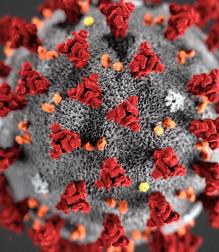We know that there are no substitutes for direct patient contact – the human connection – that characterizes our professional work. Touch, observation and treatment are central to nursing. Electronic Medical Records, like all other forms of technology and artificial intelligence, has the potential for flaw, error and abuse. We need to maintain a critical perspective as computer and EMR systems do, in fact, interfere with the nursing process and practice.
Computers cannot replace good nurses
At a recent workshop held by NYSNA for the nurses at Shore Medical Center, there was much criticism of computer systems. One pediatric nurse commented, “We spend too much time dealing with the various computer systems in order to thoroughly document on our patient.” Another said, “It is frustrating and can potentially interfere with effective communication with others on the healthcare team because there is more than one computer system we have to document in.”
These comments led to a lengthy discussion on strategies to diminish the barriers that computers and EMR systems place on the relationship between the nurse and the patient. “Interaction, trust and connection are the foundation for the relationship between the nurse and patient, which are key to fulfilling the nursing process and facilitating our practice, ” said Sheila Jargowski, RN, of Shore Medical Center. “We cannot let computers get in the way of that.”
At Maimonides Medical Center in Brooklyn, doctors in the ER frequently rush to discharge patients in order to handle the high volume of patients in the ER. The EMR system facilitates these actions. And if a nurse subsequently enters a note in the EMR after the actual noted time of discharge, malpractice and other liability issues may arise and may jeopardize the nurse’s license.
Documentation is never factored into the workload
“Real time charting” poses another problem for nurses. Experts in nursing documentation have always recommended that charting take place as near in time to the actual event or episode of care as practical. Nevertheless, workload issues, such as insufficient staffing, excessive patient loads, and unpredictable and rapidly changing clinical situations continue to be barriers to accomplishing real-time charting. How can you chart in the moment when you are changing a sterile dressing and then have to move quickly to give medications?
Nurses take notice
There are some things that your employer is responsible for and that nurses should demand, such as promulgating policies that thoroughly reflect the particular computer system that the nurse must chart in and the data that should be charted. Nurses should also demand that their employer provide them with education on the computer system being used as well as routine updates.
If your employer is instituting a new computer system at your facility, it is imperative that bedside nurses, who will be using the system, be involved in making sure that the system is built as a useful tool for the nurses, not a hindrance to the nursing process.
Clicking and checking off boxes in the electronic medical record may be intended to help decrease the time that it takes to chart, but nurses must be vigilant in maintaining and exercising their critical thinking skills throughout the stages of the nursing process.




